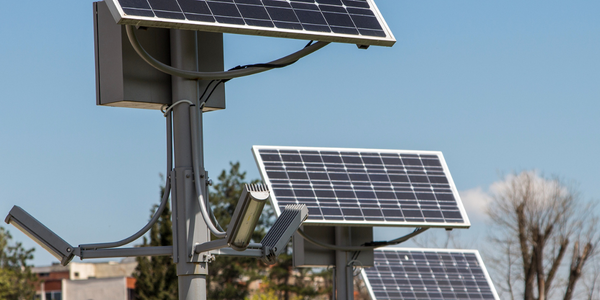技术
- 基础设施即服务 (IaaS) - 虚拟私有云
- 传感器 - 流量计
适用行业
- 海洋与航运
- 可再生能源
适用功能
- 维护
- 产品研发
用例
- 室内空气质量监测
- 室外环境监测
服务
- 系统集成
- 培训
关于客户
OpenHydro 是一家 DCNS 公司,专门从事利用潮汐流产生可再生能源的船用涡轮机的设计、制造和安装。他们是世界领先者,其愿景是在世界各地的海洋中部署潮汐涡轮发电场,以悄无声息、无形的方式发电,同时将对环境的影响降至最低。 OpenHydro 是一家合资企业 Cape Sharp Tidal 的一部分,该合资企业旨在在位于新斯科舍省芬迪湾的米纳斯海峡部署并网的 4MW 潮汐阵列。该项目有潜力成为世界上第一个互连的多兆瓦潮汐阵列之一,最初为 1,000 多个客户提供能源。
挑战
Dynamic Systems Analysis Ltd. (DSA) 近十年来一直致力于为海洋可再生能源行业提供软件解决方案。他们的 ProteusDS 和 ShipMo3D 仿真软件测试在海洋条件下运行的船舶和设备的虚拟原型。这些虚拟原型对于潮汐能行业至关重要,因为它们有助于回答与工程设计、规划、培训、运营和安全相关的问题。了解洋流、风和波浪的动态影响可以显着降低海洋环境中船舶运动和设备负载的风险和不确定性,从而实现更安全的设计并降低风险和项目成本。然而,潮汐行业面临的最大技术障碍之一是在米纳斯通道等具有挑战性的地点安装和维护涡轮机和电缆。传统上,海上试验和经验只能指导海上作业,但在极端潮汐环境下工作存在许多未知因素和很少的经验。
解决方案
DSA 与 OpenHydro 合作,OpenHydro 是一家 DCNS 公司,专门从事利用潮汐流产生可再生能源的船用涡轮机的设计、制造和安装。 OpenHydro 是一家合资企业 Cape Sharp Tidal 的一部分,该公司旨在在位于新斯科舍省芬迪湾的米纳斯海峡部署并网的 4MW 潮汐阵列。该项目有潜力成为世界上第一个互连的多兆瓦潮汐阵列之一,最初为 1,000 多个客户提供能源。为了克服技术挑战,结合了海洋经验和先进的工程分析以及 ProteusDS 等工具,确保设备的成功安装和维护,从而保障潮汐能项目的经济可行性。
运营影响
数量效益

Case Study missing?
Start adding your own!
Register with your work email and create a new case study profile for your business.
相关案例.

Case Study
Remote Monitoring & Predictive Maintenance App for a Solar Energy System
The maintenance & tracking of various modules was an overhead for the customer due to the huge labor costs involved. Being an advanced solar solutions provider, they wanted to ensure early detection of issues and provide the best-in-class customer experience. Hence they wanted to automate the whole process.

Case Study
Vestas: Turning Climate into Capital with Big Data
Making wind a reliable source of energy depends greatly on the placement of the wind turbines used to produce electricity. Turbulence is a significant factor as it strains turbine components, making them more likely to fail. Vestas wanted to pinpoint the optimal location for wind turbines to maximize power generation and reduce energy costs.

Case Study
Siemens Wind Power
Wind provides clean, renewable energy. The core concept is simple: wind turbines spin blades to generate power. However, today's systems are anything but simple. Modern wind turbines have blades that sweep a 120 meter circle, cost more than 1 million dollars and generate multiple megawatts of power. Each turbine may include up to 1,000 sensors and actuators – integrating strain gages, bearing monitors and power conditioning technology. The turbine can control blade speed and power generation by altering the blade pitch and power extraction. Controlling the turbine is a sophisticated job requiring many cooperating processors closing high-speed loops and implementing intelligent monitoring and optimization algorithms. But the real challenge is integrating these turbines so that they work together. A wind farm may include hundreds of turbines. They are often installed in difficult-to-access locations at sea. The farm must implement a fundamentally and truly distributed control system. Like all power systems, the goal of the farm is to match generation to load. A farm with hundreds of turbines must optimize that load by balancing the loading and generation across a wide geography. Wind, of course, is dynamic. Almost every picture of a wind farm shows a calm sea and a setting sun. But things get challenging when a storm goes through the wind farm. In a storm, the control system must decide how to take energy out of gusts to generate constant power. It must intelligently balance load across many turbines. And a critical consideration is the loading and potential damage to a half-billion-dollar installed asset. This is no environment for a slow or undependable control system. Reliability and performance are crucial.

Case Study
Remote Monitoring and Control for a Windmill Generator
As concerns over global warming continue to grow, green technologies are becoming increasingly popular. Wind turbine companies provide an excellent alternative to burning fossil fuels by harnessing kinetic energy from the wind and converting it into electricity. A typical wind farm may include over 80 wind turbines so efficient and reliable networks to manage and control these installations are imperative. Each wind turbine includes a generator and a variety of serial components such as a water cooler, high voltage transformer, ultrasonic wind sensors, yaw gear, blade bearing, pitch cylinder, and hub controller. All of these components are controlled by a PLC and communicate with the ground host. Due to the total integration of these devices into an Ethernet network, one of our customers in the wind turbine industry needed a serial-to-Ethernet solution that can operate reliably for years without interruption.

Case Study
Temperature monitoring for vaccine fridges
Dulas wanted a way to improve the reliability of the cold chain, facilitating maintenance and ensuring fewer vaccines are spoiled. Dulas wanted an M2M solution which would enable them to record and report the temperature inside vaccine refrigerators.

Case Study
IoT Powering A New Way to Light Streets with Bifacial Solar Panels
When James Meringer’s commercial contracting business experienced a rapid increase in solar projects, he also saw an opportunity to extend the benefits of solar by using the bifacial solar panels he’d become familiar with in new ways. Bifacial solar panels enable sunlight from both sides of the panel, making it a more efficient harvest of solar power. Seeing the panel’s power, James and his team set out to use the same technology for street lighting. Until now, solar street lights have served as utilitarian solutions that force designers to choose between form and function. The Mira Bella Energy team has changed that.



